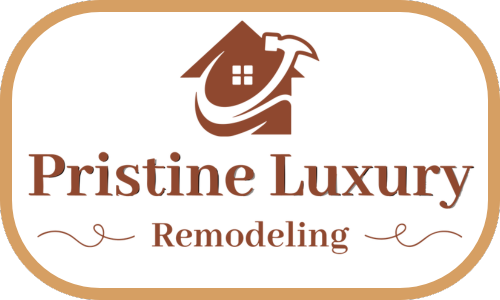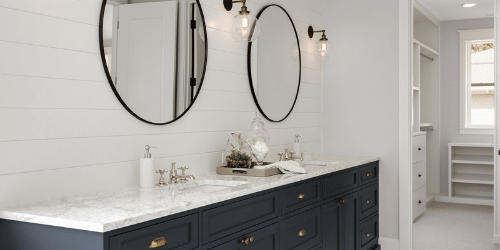Upgrading your bathroom’s heating and cooling systems can significantly enhance your comfort, energy efficiency, and overall enjoyment of the space. Whether you’re dealing with chilly mornings or sweltering afternoons, the right HVAC solutions can make a world of difference. In this blog post, we’ll explore various options for improving your bathroom’s climate control.
Upgrading your bathroom’s heating and cooling systems is a smart investment that pays off in comfort, energy savings, and increased property value.
Ductless Mini-Split Systems
What Are Mini-Split Systems
Mini-split technology, often recognized by its ductless wall-mounted units, offers zoned capabilities for efficient climate control. Homeowners can divide their homes into zones, allowing for precise cooling and heating in different areas. This system enables you to turn off or adjust the temperature in unoccupied zones, optimizing energy usage and reducing costs. By controlling each zone independently, you can create a comfortable environment tailored to individual preferences. The ability to set different temperatures in various areas of the home enhances energy efficiency and provides greater flexibility in managing comfort.
Benefits of Mini-Splits
Mini-splits are known for their energy efficiency, using less energy than traditional HVAC systems. They offer the benefit of zoning, allowing you to customize comfort in different areas of your home by setting specific temperatures for each zone. This system operates quietly, eliminating the noise often associated with ductwork. Additionally, mini-splits are easy to install, as they do not require extensive ductwork, making them a convenient and less invasive option for heating and cooling. These features make mini-splits an attractive choice for enhancing comfort and efficiency in the home.
Cost Considerations
The price of mini-split systems varies based on several factors, including the size of the home and the number of zones required. Generally, you can expect to pay between $4,000 and $5,500 per zone, which covers both cooling and heating functions. The total cost can increase with more zones or larger spaces, as each zone requires its own indoor unit and corresponding equipment. However, if you have existing ductwork, choosing a system that is compatible with it can help reduce installation costs. This approach allows for easier integration into your home’s current setup, potentially saving you money by avoiding the need for extensive modifications. While mini-split systems represent a significant upfront investment, their efficiency and zoned capabilities can lead to long-term savings on energy bills.
Variable-Speed HVAC Systems
Understanding Variable-Speed
Variable-speed HVAC systems offer advanced functionality by adjusting fan speeds to precisely match your comfort needs. Unlike traditional systems that operate at a single speed, these systems can modulate airflow to maintain consistent temperatures throughout your home. This capability ensures a more comfortable environment, as it helps to avoid the temperature swings often associated with single-speed units. Additionally, variable-speed systems provide better humidity control, as they can run at lower speeds for longer periods, allowing for more effective moisture removal from the air. Another key advantage is their quieter operation, as the system often runs at lower speeds, reducing noise levels. This combination of features makes variable-speed HVAC systems an excellent choice for those seeking improved comfort, efficiency, and quiet performance.
Benefits
Variable-speed fans in HVAC systems offer significant energy savings by adapting to the specific heating and cooling demands of your home. This adaptability means the system only uses as much energy as necessary, leading to lower utility bills. The steady airflow provided by these systems also contributes to improved indoor air quality by consistently circulating air, which helps reduce dust, allergens, and other airborne particles. Enhanced comfort is another key benefit, as the precise temperature control allows for a more consistent and comfortable indoor environment. Additionally, because the system doesn’t have to work as hard or cycle on and off as frequently as traditional systems, there is reduced wear and tear on the equipment.
Installation and Costs
Consulting an HVAC professional is essential to assess your home’s specific heating and cooling needs. They can provide expert advice on the appropriate system size, brand, and configuration that best suits your home’s layout and your comfort preferences. Costs for HVAC systems can vary widely based on these factors, as well as the complexity of the installation process. For example, a larger system or one with more advanced features will generally be more expensive. Additionally, if your home requires significant modifications or new ductwork, the installation costs may increase. An HVAC professional can help you navigate these considerations and provide a detailed estimate, ensuring you choose the most efficient and cost-effective solution for your home.
Heat Pump Systems
Air-Source Heat Pumps
Heat pumps are versatile systems that provide both heating and cooling for your home, making them a convenient year-round solution. They are known for their energy efficiency, as they transfer heat rather than generate it, which reduces energy consumption and utility costs. Modern heat pumps are designed to perform efficiently even in cold climates, thanks to advanced technology that allows them to extract heat from the air or ground even at low temperatures. This makes them a reliable option for maintaining comfortable indoor temperatures throughout the year, regardless of the weather outside. Their dual functionality and efficiency make heat pumps an attractive choice for homeowners looking to streamline their heating and cooling systems while reducing their environmental impact.
Retrofitting with Heat Pumps
Air-source heat pumps can effectively replace existing heating and cooling systems in your home. Their installation typically involves placing an outdoor unit and indoor air handlers to manage the climate control efficiently. For homes in extreme climates where temperatures can become very low, consider a dual-fuel system. This type of system combines an air-source heat pump with a supplementary heating source, such as a gas furnace, to ensure reliable performance even in harsh weather conditions. The dual-fuel system provides flexibility and enhanced efficiency, ensuring your home remains comfortable year-round, regardless of the outdoor temperature.
Benefits
Heat pumps offer significant energy savings because they transfer heat rather than generating it, making them more efficient compared to traditional heating systems. This transfer process requires less energy, which can reduce your utility bills. They are also environmentally friendly, as they have a lower carbon footprint compared to systems that rely on burning fossil fuels. By providing both heating and cooling in a single system, heat pumps deliver year-round comfort, eliminating the need for separate systems and enhancing overall bathroom efficiency. This dual functionality ensures that your home remains comfortable throughout all seasons, while also contributing to energy conservation and environmental sustainability.
Answering Common Questions
Q1 How do I choose the right system size?
A1 Consult an HVAC professional to perform a load calculation based on your home’s square footage, insulation, and climate.
Q2 Can I install these systems myself?
A2 While some DIY enthusiasts can handle basic tasks, professional installation ensures optimal performance and safety.
Q3 What about maintenance?
A3 Regular maintenance is crucial. Schedule professional tune-ups to keep your system running efficiently.
The Impact of Energy Efficiency
Energy-efficient systems not only save money but also reduce your environmental impact. Consider the long-term benefits when making your decision.
Seeking Expert Advice
Always consult HVAC professionals before making major upgrades
Conclusion
Upgrading your bathroom’s heating and cooling systems is a wise investment that enhances comfort, boosts energy savings, and increases property value. Whether you choose ductless mini-split systems, variable-speed HVAC solutions, or heat pumps, ensure you schedule regular maintenance with a professional to keep your system running efficiently and receive tailored recommendations. Consult an HVAC expert to assess your home’s needs and select the appropriate system size and type for optimal performance. Prioritize energy efficiency to lower utility bills and reduce your environmental impact. While DIY enthusiasts might handle some tasks, professional installation is crucial for ensuring safety and peak performance, ultimately ensuring your investment delivers the best results.
Visit us at Pristine Luxury Remodeling
For more information and personalized guidance visit us at Pristine Luxury Remodeling, We specialize in providing exceptional remodeling services that elevate your space into a masterpiece of luxury.







